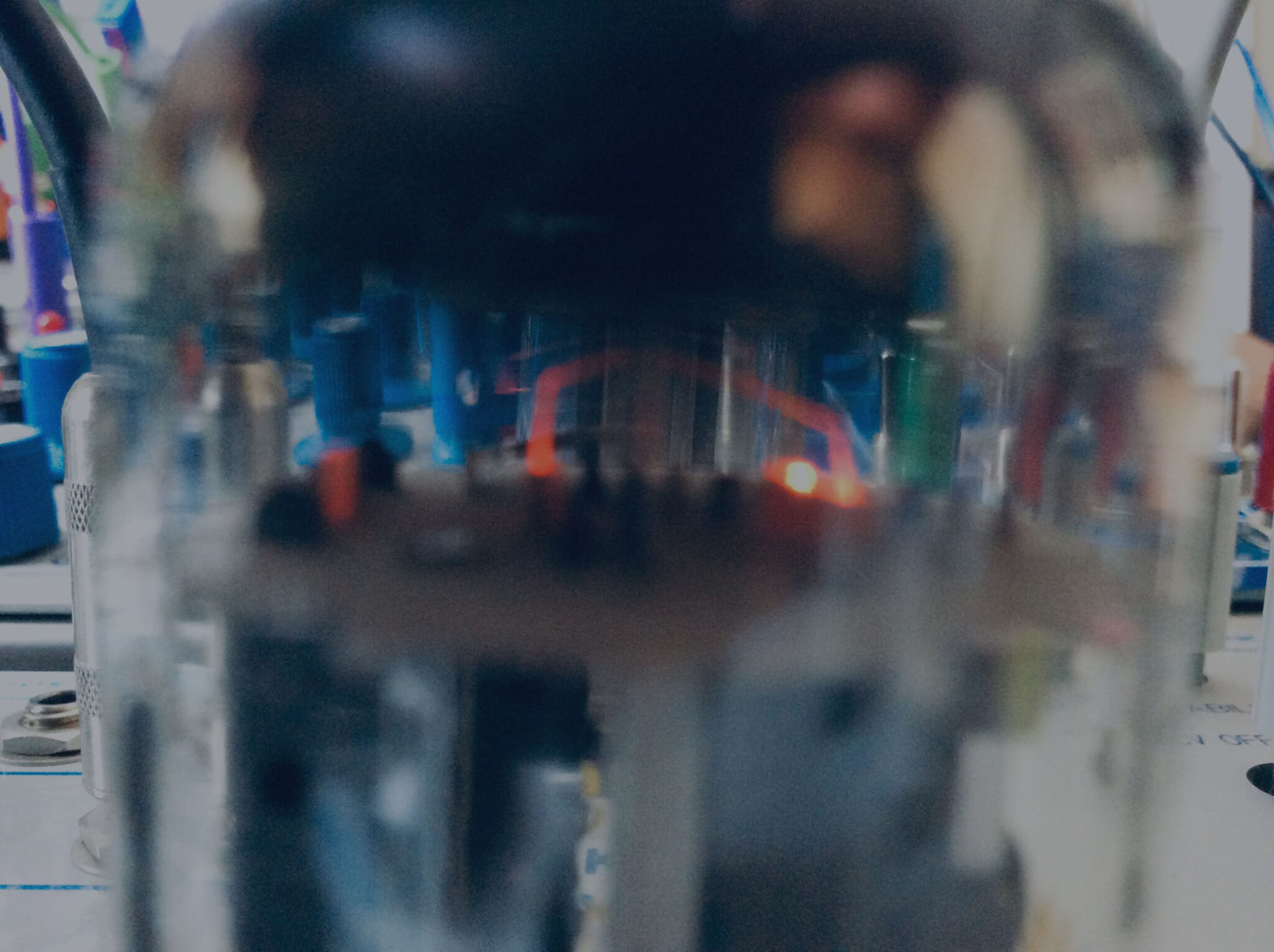
3 years ago I started to gather some music from composers playing Buchla instruments and 2 volumes of BUCHLAÏSMS appeared as a companion to my first choice in our I.T.A.T.I.O.M. chapters dealing with Inventors Talking About Their Instruments Or Modules.
https://modular-station.com/modulisme/itatiom/buchla/
Those 2 volumes, offering about 7 hours of music were already a mammoth of a collection but I had a feeling that many players were missing. My purpose was to respect the historical side while showing today’s creation.
Thus the last few months have been very studious, spending a lot of time pulling strings, trying to find new users of the instrument, re-launching or convincing some of the best-known to participate to an hommage to Buchla. Of course I haven’t managed to get everyone on board and no worries as I’m happy to rest assured that some do not need our support…
Nevertheless 5 new volumes filled with creations made on purpose are now ready.
BUCHLA – often labelled as the Stradivarius of Synthesizers – is one of the most innovative « musical vessel » ever designed, whose extent of the sound spectrum does not seem to belong to this world and the logic lies apart from everything that may have existed before its creation. The Buchla synthesizer is named after the electronics pioneer Donald “Don” Buchla, who manufactured his first modular synthesizer with the avant-garde musicians Ramon Sender and Morton Subotnick, the founders of the San Francisco Tape Music Centers (SFTMC). Both were looking for an engineer who could implement their ideas and requirements and found this person in Donald Buchla, with his extensive musical and technical expertise. In 1963, they eventually managed to achieve together what they had been working toward for years: an analog, modular synthesizer. The Buchla Series 100.
As you know Modulisme has paid a lot of tribute to SERGE, celebrating its 50 years of existence with dignity. So I thought that since Buchla is the one that started it all for me + my favourite system, it was high time to add some entries to our « Buchlaïsms » series. Those were chapter I and II, and five more will appear until December.
https://modular-station.com/modulisme/session/21/
+
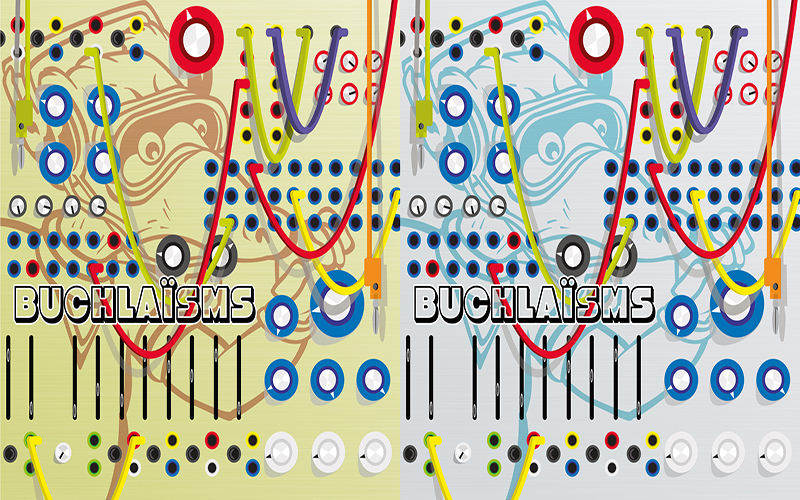
Don Buchla initiated the 100 series Modular Electronic Music System in 1963 + the Easel in 1973 so let’s celebrate in a grand way…
01. Philippe Petit – Buchlaïsms (in 3 parts) (22:34)
Ouverture (00:00 to 03:16) + Part II (03:18 to 13:23) + Part III (13:36 to 22:33)
Even though as a teenager, back in 1983, I chose to get involved and find my place in the independent music scene by publishing fanzines, hosting radio shows and then later developing my own labels, it was only much later that I started putting my own sound to the test. Turntablism was my way, pressing unique vinyl containng my own sound sources and manipulating them onstage. Then in 2007 started the Strings Of consciousness adventure giving birth to my compositional practice. My approach has always been playful, I loved picking up an instrument and playing it in the Punk way that I grew up, where you could try your hand at an instrument without having learnt it beforehand, which allowed you to be daring. Playing a guitar, a cymbalom, or inside the piano in a percussive way came naturally to me, and my Buchla immediately seemed ideal for fulfilling this rhythmic appeal. What’s more, it simultaneously opened up melodic possibilities played by various voices (oscillators) so if I dare say my music could become « counterpointically percussive ».
My first contact with the Buchla sound was through the discovery of the Easel and I knew straight away that it was exactly what I wanted. A painter uses an easel to support the canvas on which he creates his works. So the Buchla Easel was the ideal support to hold a canvas on which I wanted to create my sound paintings. Over the years I upgraded to a full System 200 as I like this desire to create an instrument that is as complete as possible and that you have to tame and adapt to your needs by choosing and assembling its functions and modules. It’s a highly personal process that guarantees infinite possibilities. Patching becomes part of my compositional process. Once I had learnt how to use each module on its own I became interested in having’em communicate, corrispond just like an orchestra where you compose your score for an ensemble of instruments and pay attention to the characteristics of each and everyone. After I had become accustomed to the sonic possibilities of my instrument, tasted most of its timbral flavors I craved for some sound transformations, how to reach different territories. That quest is infinite and allows to adapt the instrument according to my needs and to prepare the patch that will enable me to achieve the musical colour I’m looking for, or to find the precise sound that’s missing… I like to build my instrument in different forms, simply by rearranging each of its modules. That “electronic lutherie” allows me to surprise myself and to adapt to different projects/ideas.
This « Buchlaïsms » piece is in three parts, and the aim is to demonstrate all the organic richness and the timbral and harmonic complexity that such an instrument can offer.
For the ouverture, I had in mind the Grand Canyon in the USA and wanted to play on the speed of the harmonic changes, as opposed to simple note values. I chose to use the Digital Resonator (based on Rings from MI and adapted in 4U format by 1979) which uses digital signal processing to simulate vibrating strings and resonating membranes. At times going into a Vox AC30 Amplifier + Fender Bassman Cabinet creating beautiful saturation + a large-scale musical gesture.
Americana as if we were there…
In Part 2 you’ll hear more of the great importance of the Digital Resonator. Whether I may use it to process a signal or as a main voice this module never fails to impress and has proven essential to my ears. The sweet melody was played using a unique module built by Gabor Kakuk from Encoder Audio, the Dual Random Looping Sequencer Model 302 a glorious adaptation of the OLD Turing Machine Random Looping Sequencer by Music Thing Modular. It goes into another fantastic piece of my equipment, Jürgen Haible’s Frequency Shifter adapted to Buchla format by Jon THC and built by Anthony Capelli.
The MARF + Benjolin (another terrific adaptation from Rob Hordijk’s to the Buchla format by Anthony Capelli) and 266 are also operating in full force to bring some surprise…
Part 3 offers The 208 Easel top floor enhanced by some 296 filtering actions. Obviously the 208 has to be a favorite offering so many options: 5 step sequencer, an Envelope Generator, a Pulser, 2 VCO offering ring mod, AM, and FM, 2 Lo Pass Gate (in parallel or in series) of which 1 is reversed in polarity to allow other types of filters + préamp, reverb, inverter, monitors…
Although for my taste the most beautiful voice comes from the immense 258 Dual Oscillator screaming out loud in the 1979 Stereo Microsound Processor offering Granular, Pitch Shift as well as some Spectral processing. It’s a bit like stepping out of my body, with just these voices talking in my head that I can’t really understand, while they’re echoing endlessly and hauntingly.
I WANT MORE!
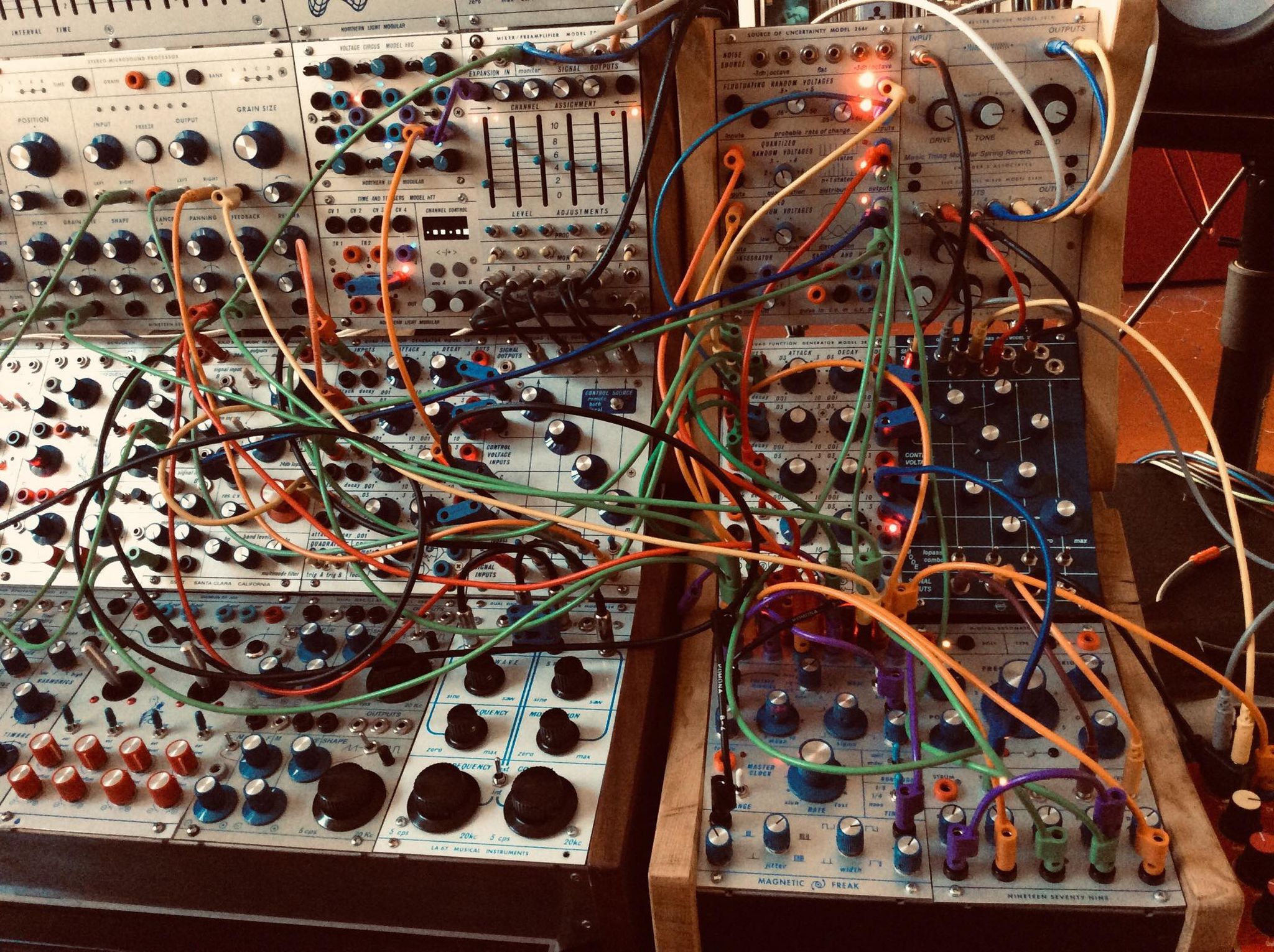
02. Barry Schrader – Galaxy Of Terror (2023 Medley) (18:10)
A giant of the so-called « West-Coast sound » who was among the first pioneers to play the Buchla Synthesizer. He is the founder and first president of SEAMUS (Society for Electro Acoustic Music in the United States). He has been a member of the composition faculty of the California Institute of the Arts School of Music since 1971 and has been acclaimed as « a composer born to the electronic medium ».
In 1981 he was given the mission to land on the planet Morganthus and compose a soundtrack for a film openly inspired by Alien: “The Galaxy of Terror”.
The Corman method – to produce quickly, cheaply and make money – worked efficiently. It must be said that a certain amount of care was taken with the film, particularly with the sets, which really make up for a low-budget B-movie. The interior of the ships, the corridors and the interior of the curious pyramid on the planet Morganthus have nothing to be ashamed of compared to other B-movies of the same type. Fans of big rubber beasts will be delighted, especially during the now cult sequence of the giant worm raping the blond girl Taaffe O’Connell, who is stripped naked by the lecherous animal in the process!
For this hallucinating sequence alone, you must see The Galaxy of Terror!
Be careful not to be fooled by the superb poster of the film, and especially by this visually sublime flying insect with a skull, but that we never see during the adventure. What a pity!
On the other hand, we do hear the mythical Buchla 200 synthesizer and this work not being available any longer Barry was pleased by my idea of creating a Medley and offering it for your pleasure…

03. Layne (Rachel Aiello) – Electricity (04:28)
Layne composes field recordings, abstract auditory textures, and rhythmic concrète churns into a hypnotic aural terrain playing her Buchla Music Easel with the Aux Expander.
The basis of this track is one of the presets that I made for the Buchla Music Easel Program Manager Card. From there, I used the Easel AUX expander to add another voice as well as white noise.
After hearing about Buchla synthesizers for years, the first time I heard a Buchla in real life was during two concerts on the same weekend. One was Anthony Child (Surgeon) performing in LA at the Hollywood Forever Cemetery, and the next evening Suzanne Ciani performed her first solo Buchla performance in 40 years, which is also the day that I met her.
I usually find myself using my Music Easel on its own, using it to perform short sketches in one take. Because I see the Buchla as a collaborator, I feel that I tend to be more artistically free.
I always have fun exploring the 208e. Through its limitations, I find that it forces me to be more creative and think in different ways. Sometimes with a full-modular system, the possibilities are so endless that I feel I can spend more of my time creating new patches than actually playing the instrument.
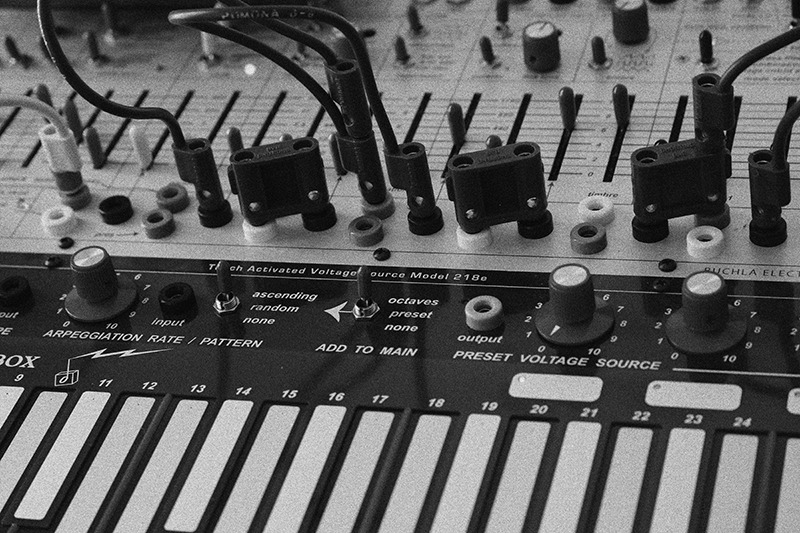
04. David Rosenboom – The Two Hundred Things (21:25)
David Rosenboom is a composer-performer, interdisciplinary artist, author and educator, known as a pioneer in American experimental music. Working with Don Buchla, he was one of the first composers to use a digital synthesizer.
The Two Hundred Things is an improvised, live-performed, sonic construction created with a patching technique designed to enable sound forms to emerge from a complex, feedback-based, self-organizing instrument. All the sounds in The Two Hundred Things were made with an instrument containing only six, 1970s vintage, Buchla 200 Series analog modules: Triple Envelope Follower Model 230, Source of Uncertainty Model 266, Dual Voltage Processor Model 257, Dual Oscillator Model 258, Dual Voltage Controlled Filter Model 291, and Frequency Shifter Model 285. No envelope generators or sequential controllers were used in this very small Buchla modular arrangement. The dynamic activity of the patch, manipulated in performance, is the origin of all we hear. The recording was made in two, improvised passes. The first was performed with only the modules listed above. The second pass was made with the same modules, this time though, employing an additional resource added to this small Buchla instrument. A few sound samples from the first pass were extracted and loaded onto a memory card in a Soundhack Morphagene module from MakeNoise. The sounds from the Buchla modules performed in the second pass were simultaneously parsed into four frequency bands, and the envelopes of each were used to activate samples from the first pass processed in the Morphagene. The resulting two live recording passes were mixed to make this recording.
The Two Hundred Things references The Ten Thousand Things as found in Taoist and Buddhist writings — (it does not intentionally refer to the composition by John Cage of that name, rather to the Buchla 200 Series). The multiplexity of all life dynamics, universes, evolution, and teleologically projected futures is pertinent to the multiplicity of sound identities we may extract from The Two Hundred Things. We may listen to all the details in the soundscape and arrange them in our conscious, thousand-brain minds into whatever manifestations we may build of perceived internal universes. That’s all in our inner world, also partly driven by our outer world proprioceptions.
The first experience I had with Buchla instruments (Don hated the word “synthesizer”) was in 1968 with two Buchla 100 Systems, one at The Electric Circus in New York and another in the “Bleeker Street Studio” of Morton Subotnick. I very much liked their openness to compositional thinking, live performance, and the overall sound. I think Don’s voltage-controlled gate circuit helped define the sound. It combined amplification and filtering together so that during the decay of a sound, it mimicked the spectral decay of a receding sound source, a sound that was moving away from you.
I have used Buchla instruments for a wide range of applications, from implementing fully constructed compositional models to performing completely open improvisations. Since I had the privilege of collaborating and consulting with Don on some instrument designs, I was always aware of how every module starts with a compositional vision. That was wonderful.
I made the most extensive use of the Buchla 300 Series, a hybrid, computer-controlled system, and then, the instrument we worked together to develop, the Touché computerized keyboard instrument. In the 300 System, I loved the Source of Uncertainty Model 266. I suggested to Don that he develop a means to incorporate stochastic compositional processes in a module, and I suggested the name for it. There were other modules, like the Complex Wave Generator Model 259 I liked very much and used a lot.
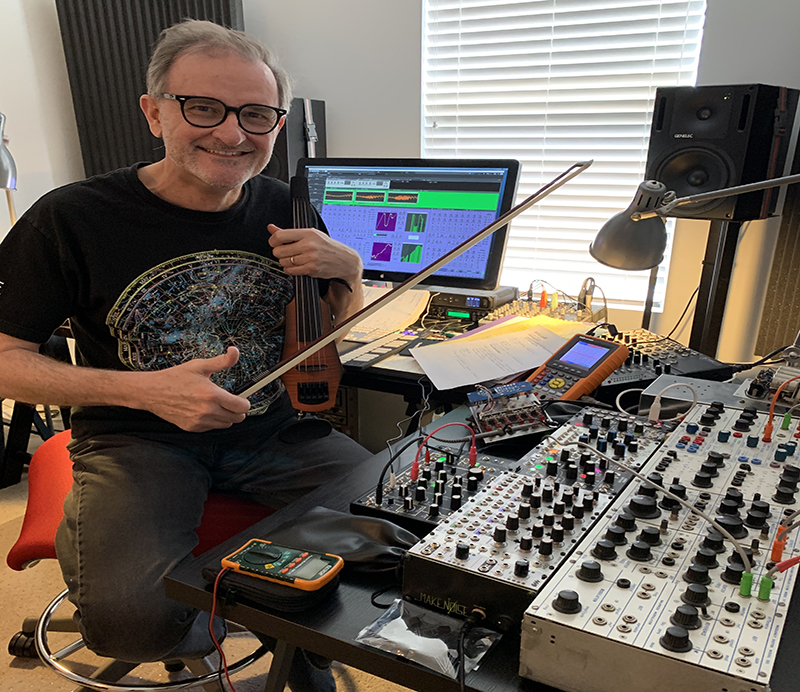
05. Jessica Kert – I can See it coming (04:21)
Berlin based electronic musician and Techno producer, Jessica Kert loves diving into experimentation with her modular synthesizer.
Working in the famed Berlin synthesizer heaven Schneidersladen rest assured that she knows her ropes.
Peering her way through a dense forest of patch cables, feeling all these frequencies and with the love of the physicality, Jessica is playing her Buchla 200 with much dedication + she is constantly producing music and released her new album on the multidisciplinary arts collective Detroit Underground.
I have been attracted to Buchla for almost 10 years now. Through my day job at the synthesizer heaven Schneidersladen I was suddenly surrounded by all these Eurorack modular systems and their builders, so I started to learn how to play these instruments and read everything I could find about the history of electronic instruments.
Of course Don Buchla came across and when I started to study his instruments during the Corona lockdown times I realized that a lot of nowadays electronic music instruments maker`s had been inspired by his work. As far as i am concerned I was always more attracted to the West-Coast philosophy and to me it felt like Don`s instruments were exactly what I needed.
When I heard his instruments in real for the first time I just thought- Damn! need to work on my gain – staging. The sound was so powerful, massive and cristal clear.
To me, the Buchla 200e system is simply mind blowing. Although I have a huge knowledge of Eurorack instruments I stood in front of it and just realized that I had to start again from the beginning. Especially when it comes to the tremendous possibilities of the control interfaces. Basically, I have constant explosions going in my brain, also when it comes to creativity. Not sure yet what it will bring to my artistic vision but I already know for sure that it won`t be stagnation.
If I have to pick my favorite module, it would be definitely the Buchla 223e. What I do love most is its physicality. You can control your system on so many levels just with your fingertips. There is no need to think so much, you just go with the flow.
The System Interface 227e just opened a new door to me. The fact that you can hear the sound in Quad and the possibility to play with this is a very exciting experience. To feed in a signal from the outside world over the Mike Preamp is just awesome and very open minded.
Last but not least, the Buchla 210e Control Signal Router, which is such a helpful module to keep your Audio – and CV-control signals organized. Just by simple routing you can change your whole composition to something totally different.
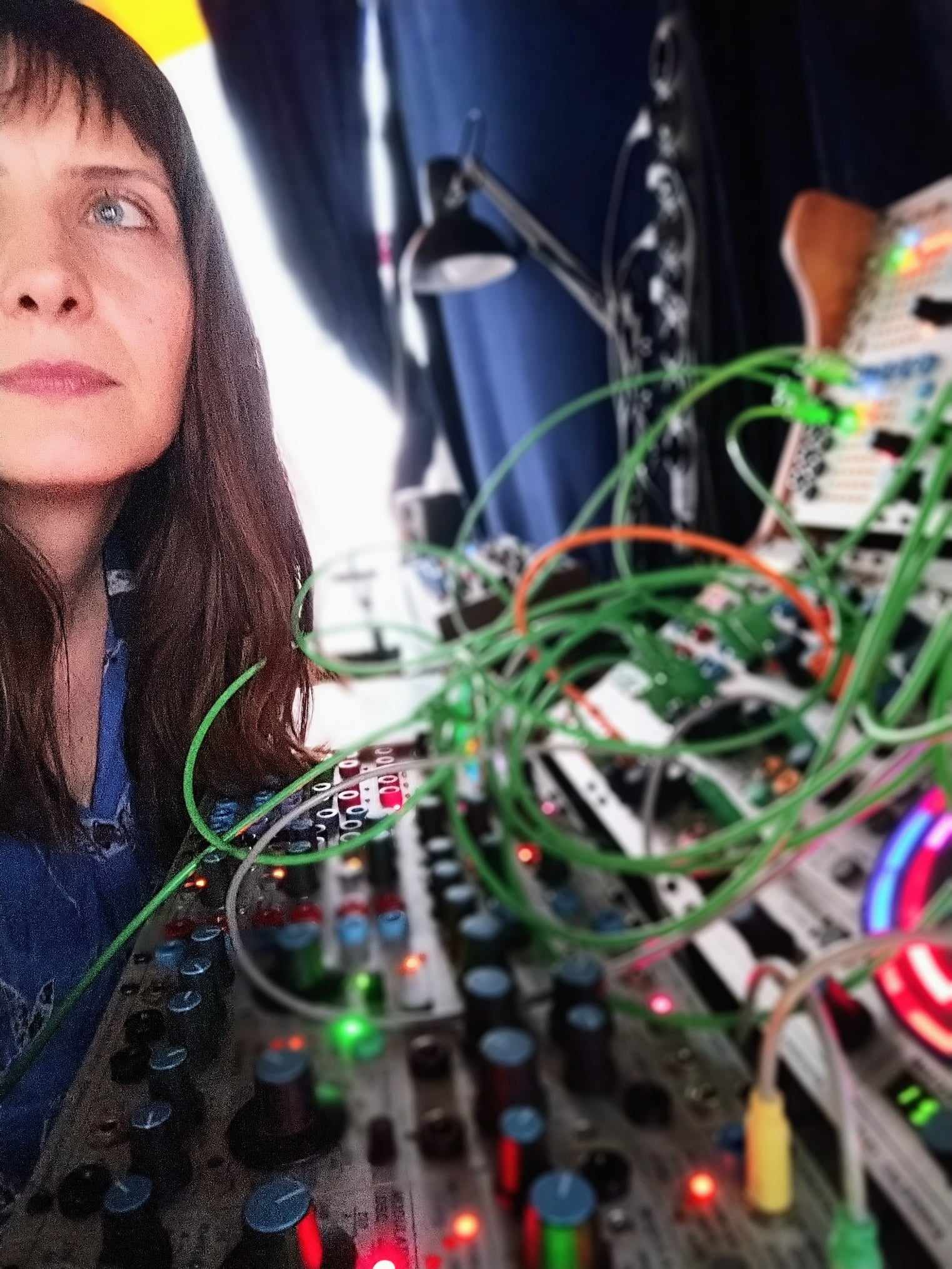
06. Encoder (Gàbor Kakuk) – Landing Area (11:28)
Gabor Kakuk runs Encoder Audio providing FX, instruments or samples to the mass…
http://www.encoderaudio.com/
I always try to “transfer” feelings through my tracks instead of telling a story.
I often experiment with monotonicity, with minor parameter changes and asymmetric arranging.
In my opinion, in terms of interaction, there are three main categories in the modular synth field :
where you can patch everything with everything (pretty much every system, except Buchla)
where you can’t patch everything to everything (Buchla)
where you MUST patch everything to everything (Serge).
For me, Buchla and Serge are kinda’ outsiders and that appeals to me – I like to use “different” stuff in my studio.
I got introduced to the Buchla world back in 2016, I think. I built a 144 oscillator, based on the build documents published by Mike Peake – As soon as i started building I knew that this was something totally different!
My system is a 100% DIY system; besides the standard modules, I have a lot of one-off designs in it – so, the usage is a bit different as well. For instance this unique BUCHLA MODEL 302 / OLD Turing Machine Random Looping Sequencer is a circuit that produces clocked randomly changing control voltages. These can also be locked into loops that repeat every 8, 16 or 32 steps.
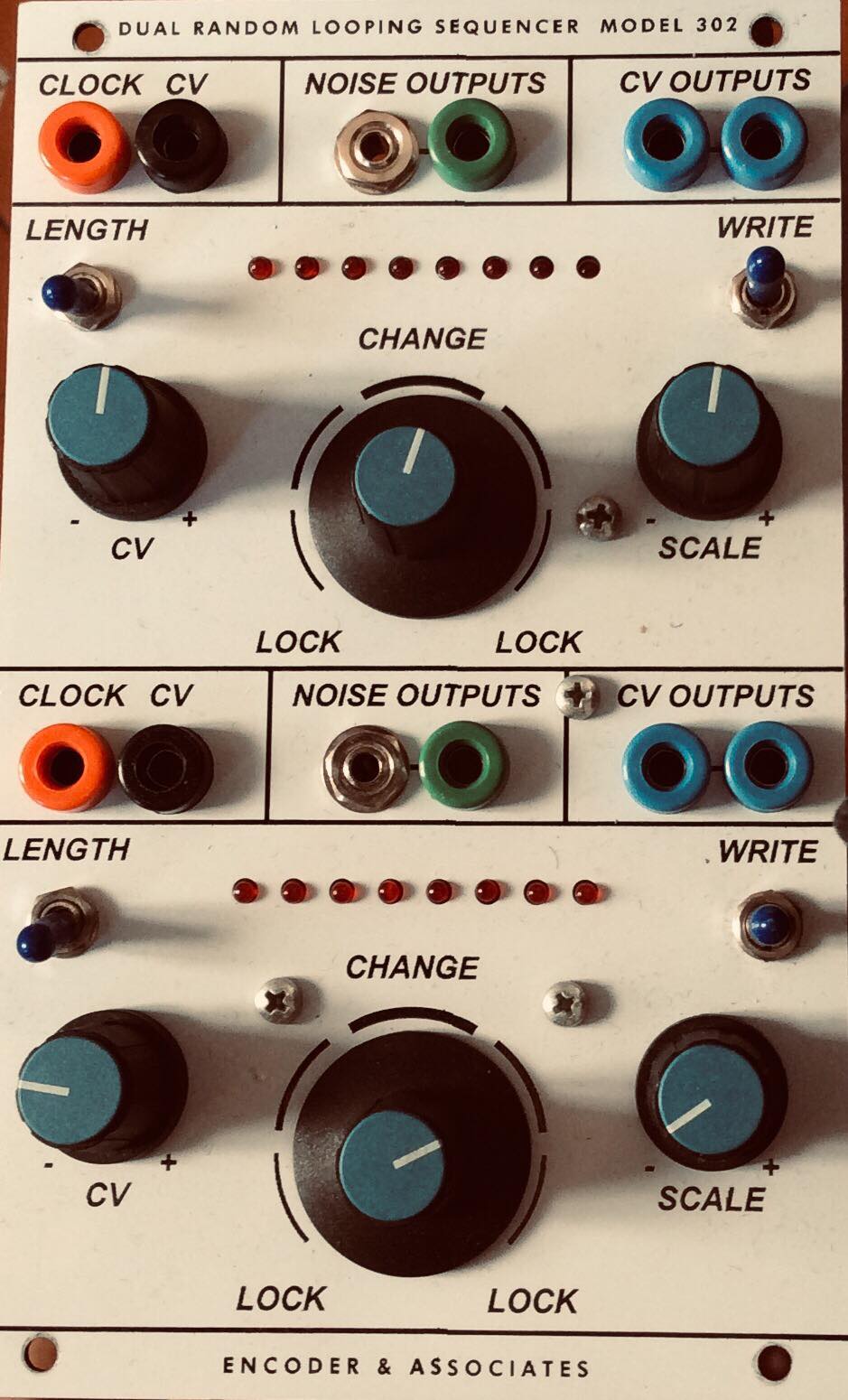
07. Thomas Dimuzio – Foldings X (Squawk and Bawl) (03:59)
Thomas Dimuzio is a musician, composer, improviser, sound designer, mastering engineer, and music technologist residing in San Francisco, CA. His music is like a sonic excursion that transports the listener into other worldly aural realms.
His recordings have been released internationally by ReR Megacorp, Asphodel, RRRecords, No Fun Productions, Sonoris, Drone Records, Odd Size, Seeland, Monotype Records and other independent labels. Among his collaborators are Chris Cutler, Dan Burke, Alan Courtis, Nick Didkovsky, Fred Frith, David Lee Myers, ISIS, Matmos, Wobbly and Negativland.
I have an ongoing project called Sculpting Electric where I’ll spend days building complex patches between Buchla 200e and 200 systems with the intention to facilitate live in-studio compositions. This particular Sculpting Electric patch is themed and titled “Foldings” and seventeen variations were recorded; four of which were hand-picked for Modulisme.
As a sampling artist it took a few decades for me to come around to modular synthesis and Buchla systems. It wasn’t a particular piece or sound that attracted me as much as looking for inspiration beyond what I’d done with sampling. A Buchla wasn’t really possible to audition in person, but after a few calls to Buchla headquarters, where Don Buchla actually answered the phone, I took a leap of faith and dove head first into what I’ve called my ‘mod-life crisis’. Around then my friend Chris Muir of Eardrill graciously demo’d his system for me, but I had already bit the bullet and sent the down payment to Don. Buchla’s forward thinking modules, elegant design, and larger form-factor also beckoned. After diving in I quickly realized how I was essentially sculpting with electricity. This may seem obvious, but after working for so long with MIDI-based instruments and 128 steps of granularity, I found this lightspeed precision a treasure to behold.
I can’t think of any other musical environment harnessing raw electricity better than Buchla. The consistency of design between modules is also something that I’ve come to appreciate: the segregation of CV and audio signals; the CV color coding, the audio inputs on the bottom and outputs on the top, and uniform gain-staging all contribute to a more seamless musical workflow.
This system always pushes forward.
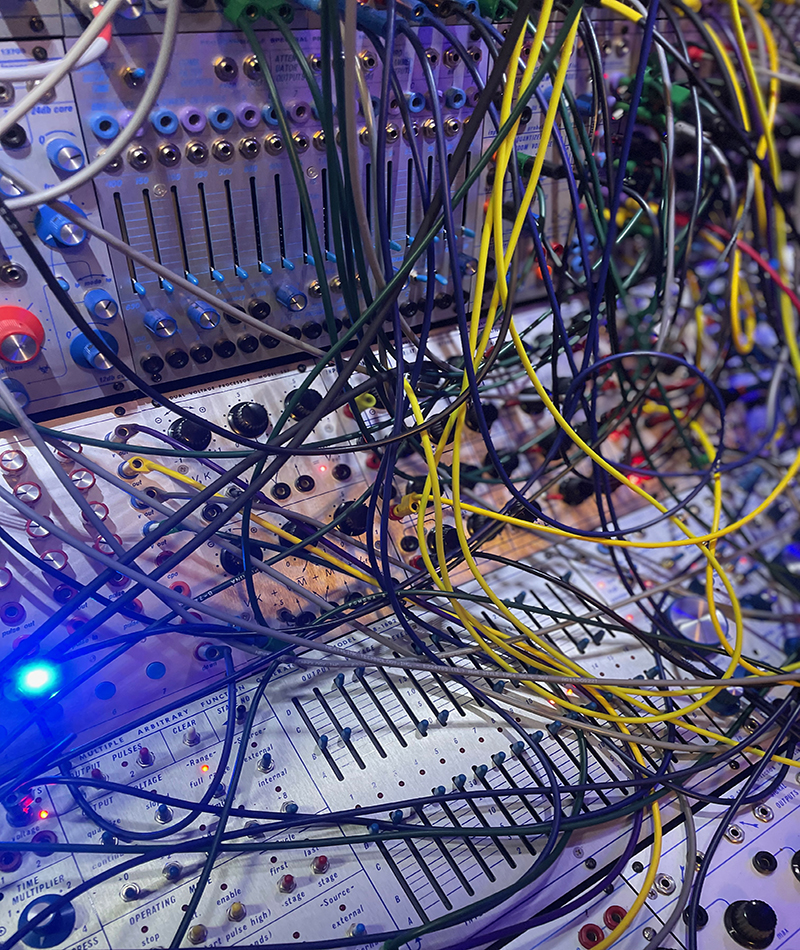
08. Cray (Ross Healy) – Lume Upp (05:39)
Recorded at Amnesia International 2023, Kyneton, VIC, Australia.
Ross Healy has been heavily involved with electronic music since the mid 90’s, covering many styles of electronic music, Avant improv electronics, Experimental computer music, Noise, Industrial, Techno, Ambient, IDM and Drum n Bass.
I love the visual feedback you get when using the Buchla. Also the Willy Wonka vibes from the original Rogan knobs and lights combination.
Its like an Alien made it.
The first recording featuring Buchla instrument I heard was Morton Subotnick Silver Apples Of The Moon. The first time I heard in real was when it arrived at my studio back in 2005 and I just fell in love with it.
I create sonic paintings and the Buchla system I have allows me to zone in and zone out.
I love the 258 oscillator. Its HUGE! The 227e is great fun also. Never used it in quad but like to be able to throw the sounds around.
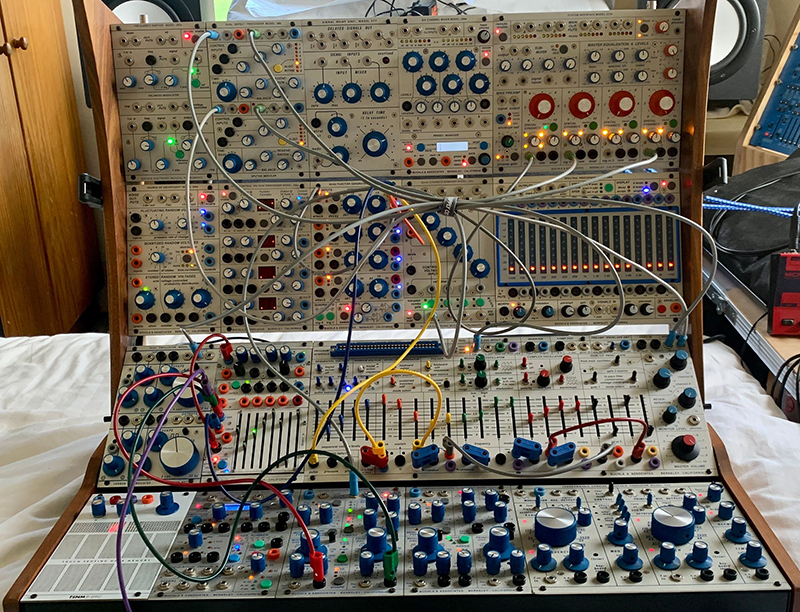
09. Joker Nies – Body Contacts! (06:56)
Since the early 80´s, Nies experiments with all kinds of electronic sound-sources, like modular-analog synthesizers, individually designed electronic devices, DSP-based systems (like Kyma/Capybara) and software based sound-sources.
During the early 90´s, modifying the Omnichord became his initiation to what is known as circuit-bending. Since that time a steadily growing number of devices has been converted from simple toys into alien sound devices.
A freshly improvised piece on my heavily modified Buchla Süper Easel, with a little help from two H9 FX pedals. Its all done by body-contacting…
The playing is the composition. The intention is to tell some kind of story using sounds. I am, like the listener, curious to know where they journey will take us.
To me Buchla instruments develop a more interesting approach to synthesis than subtractive synthesis. The sprectral behavior is much more to my taste in the Buchla world.
Listening to Morton Subotnick, I thought: Yes! this is how a synthesizer should sound like. Pretty much in oposite to Switched on Bach.
The Music Easel K, as I have modified it with a body-contact interface and a simple, passive modulation-matrix, is a development of my interest in body-contact controlled instruments. Compared to my circuit-bent Omnichord OM-27, which had many strange body-contact behaviors, my Süper-Easel tops it off, by giving me precise and liquid control of all parameters. A Buchla system, as I would like one, is completely out of my financial reach. I am always on a tight budget, due to my diverse interests. This is one of the reasons, I am hardcore DIY, and have always modified my instruments.
For me, my süper-modified Music Easel is « the best of Buchla » in a roadworthy format.
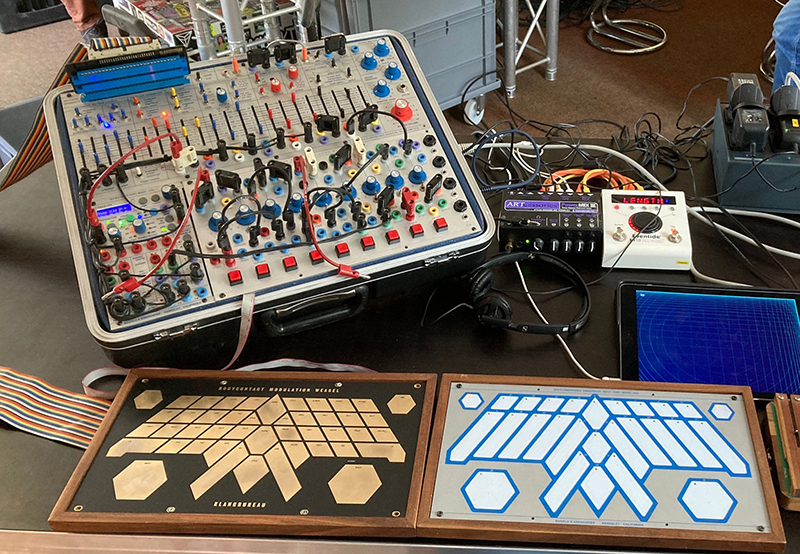
10. Batchas – 1, 2, 3 soleil (04:25)
Batchas started to play electronics and experimental, industrial music in 1983 using analog machines.
I enjoy exploring very diverse sonic territories and decided with this patch to let the modular system breathe by itself, instead of tweaking in realtime all kind of parameters or twisting pots like I often do. I did set a self-playing patch based around the Buchla 281e long decays and cross-modulations while adding some external help with a cross-modulated Serge DUSG adding to the respiration I wanted to focus on.
The system used is a Buchla 200e with a few clones, like for instance a 288v delay which is best heard during the pauses/intervals, with some lingering tone remaining present in the background.
Once the patch is set, for me it’s like listening to an orchestra led by a weird conductor who stops very often in the middle of after a phrase, hence annoying the players not knowing where it’s gonna go next.
I could say that I have absolutely no boundaries when it comes to style. I don’t stick to any genre of music, and I am totally open to anything that moves me. The Buchla system fits perfectly this (non)criteria. So does the Serge modular system BTW. It’s always a lot of fun when I do patch it again and again.
When I received the 200e I was very impressed by the consistency and well thought interface.
For instance realizing what a module like the 250e could do really impressed me. I love also the MARF which I acquired a bit later than the 200e.
I also like very much a module like the 266e (or a 266), which invites me to explore random more than I ever did earlier, more deeply.
So choosing one favorite is a bit difficult. It’s a bit weird to say, but maybe it would be a clone from the 258, the 258v made by Mark Verbos, as I was never able financially to own any original 200 module. I like the 258v very much. Simple, the kind of sound I like, very efficient. I did build different clone variations and all sound very good to me.
Love and hate: the 288v. Also from Mark Verbos. It always need some repairs which I’m glad I can do by myself or it would be impossible to have a 288v as part of the system. It’s also very noisy, but so much fun to play with. Unique. I often send it to a 291 filter to filter the noise.
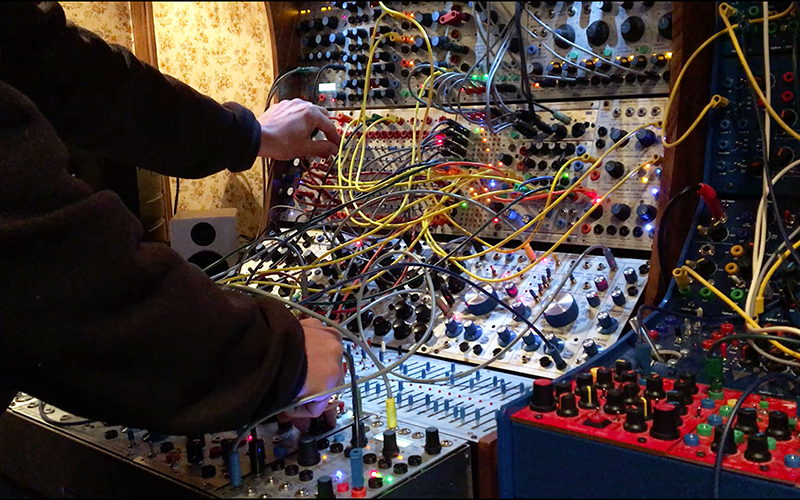
11. Sig Valax – Xylene (05:53)
After attending the class of electroacoustic composition of Christine Groult at the Conservatory of Pantin (DEM) Sigolène Valax realizes electroacoustic and radio pieces, sound creations for live performance.
She is interested in wild lutheries and explores experimental improvised music with Vierge Noire, Elek Ember, Seuil Optique, Sauges, Mesce Basse, and Lucus Furrina.
I’d like to retrace my steps back to the Buchla synthesizers and celebrate these magnificent machines that so vibrantly catalyse a form of freedom and creative power. So to follow in their footsteps I’d talk about the body, an organic body in which all the colours of the rainbow are hidden. First I discovered its skin, then little by little its structure and sensuality. I envision the Buchla synthesizers, particularly the Music Easel, as a naked body. I have the sensation that its flesh curves in the dampness of the electronic folds, and this nudity calls for very special attention. The instrument is at times shaggy, noisy, rumbling with fury and at other times fertile in harmonics, leaping from ritornellos to rhythmic or tribal sequences. It develops an unparalleled vocabulary with precision and tactility for us humans who caress it.
When I first heard the sounds of the Buchla, I felt as if I were in a state of grace. A clamour of summer ardour touched me, continued with fiery tones and struck my sensibilities right to the bone, along my spine and neck. The Buchla’s song sought my blood and I offered my veins. There was something bewitching, I was bitten by its spell.
For me, the Buchla system is a raging body that generates full-lipped waveforms and complex frequencies that vary in amplitude with powerful beats. It oscillates between fragility, throbbing sway and hardness. There’s also a martial aspect to learning to control all these tensions, resonances, filters, amplifiers and attenuators. The visceral dimension of the cables forces me to create a space of concentration in my skull to organise the multiple combinations. I juggle to find the tessitura I’m looking for, tapping, erasing or rivetting the aural behaviours and emphasising one sonority rather than another. There’s a relentless sunshine in my pupils as I trigger the different modules of the system.
It’s a beautiful desire to compose, a pleasure to weave the electronic material at my fingertips and it’s the synthesiser that teaches me to flutter. I appreciate the possibility of playing with random forms mixed with a rigour that is sometimes tough. The Music Easel doesn’t allow itself to be boxed into a cramped, formal design; it imposes itself through the uniqueness of its internal logic. Thanks to Don Buchla’s art, I feel an intoxicating form of perception that abolishes the antagonisms between mental control and playing with the hands.
My heart is won over by the Music Easel for its tactile and sensory dimensions. I let my fingertips guide me to control it. Barely touching the keyboard gives me physical sensations and creates a state of gestural and compositional readiness. It seems dedicated to creativity through precise instrumental gestures. The faders are extremely delicate, and the jumpers and banana plugs give another breath of fresh air to my playing. The whole nature of this modular instrument encourages me to continue my investigations to tune myself flexibly to its bewitching charms.
It’s a game of accordance with the warmth of the tones, the modulation of frequencies to give meaning and orchestrate the Control Voltage/Gate. This allows me to approach the modular system in a different way and in a way that is ever more sensitive to the characteristic sounds of the Buchla.
By its very presence, the Music Easel provokes the beauty of an epidermal, tactile and sensual musical imagination.
Many thanks to Yan Proefrock for lending me his Music Easel K.
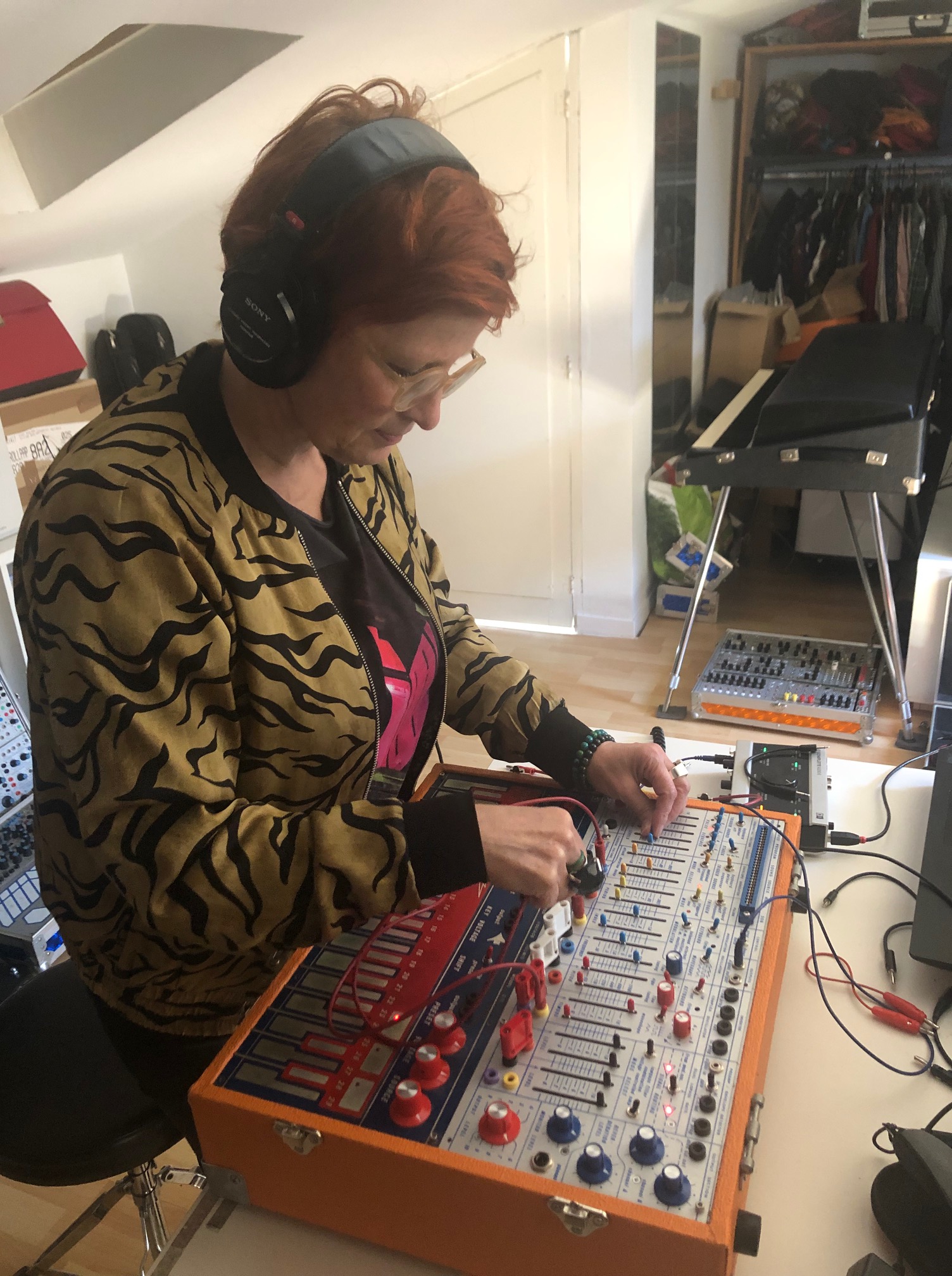
12. WEB – First Time Out (06:35)
Ocean Perch Metaphysical Muldunes.
This was made on the Buchla synthesizer at UCSD in 1972. That Buchla consisted of 4 boxes of modules and 4 touch sensitive keyboards. WEB was an ad hoc grouping of Warren Burt, Ernie Morgan and Bruce Rittenbach, all of whom were members of Pauline Oliveros’ live electronic music class then.
Although I have no recollection of making this piece, it most likely was made on the Buchla system with the 3 of us improvising simultaneously.
What strikes me, after a distance of more than 50 years, is how restrained we all were. I can, after multiple listenings, hear that there is more than one person playing at a time, but everyone is very careful to leave space for everyone else. The later outings of this trio got quite a bit thicker, but here, we seem to be very carefully listening to each other, and to the quality of the sounds that we were making (Warren Burt / SEPT 2023).
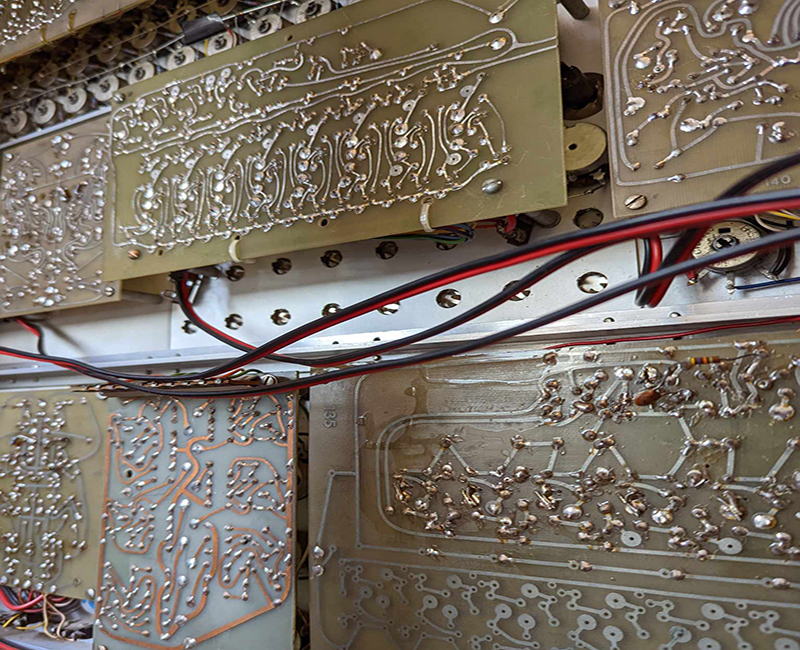
Photo : Mark Milanovich (MEMS)
13. Darrel Johansen – Fourm (06:41)
Darrel built the (in)famous Black Serge system for the Cal-Arts university and he is also a co-author of the “The Original Serge Guidebook” & worked with Serge for a long period, but « Fourm » was realized earlier, while he was studying the Cal-Arts Buchla system under Morton Subotnick’s guidance.
“Fourm” was created with Buchla modules controlled by the touch keyboard. Originally it was a four-channel piece, with the sound’s parameters and positions controlled in quadraphonic sound space.
“Pi Quarters” Graphic courtesy of my friend Ron Davis: “Number 9 from the 2022-23 Polar (Plumb Bob) Series.”
When I heard what Mort Subotnick was doing with Buchla instruments, I was just blown away. Here was an electronic instrument that could encompass a sound environment that was totally fascinating.
Don Buchla’s vision of synthesis captivated me. As opposed to the ARP 2600 which got me interested in synthesizers, Buchla’s modules were separate entities for audio generation, processing and voltage control. The Buchla system was expandable, not pre-patched and not necessarily controlled by a keyboard. It was an open pallet of sound for audio manipulation and control.
The touch keyboard fascinated me.
As a traditional keyboard player, I had to readjust my thinking about interactions with this kind of instrument.

14. Martin Eriksson – 148 harmonic generator improv (03:19)
Martin Eriksson is an architect working in many different fields. He is also a composer connected to the Electron Musik Studio in Stockholm.
EMS recently acquired this 100 clone system built by The Human Comparator. This is an etude trying out the 148 Harmonic Generator, 114 Touch Controlled Voltage Source and the 107 Voltage Controlled mixer.
I was attracted to Buchla synthesizers because It is generally considered the Stradivarius of synthesizers.
I borrowed a 259, 281, 292 clone combo from a friend and I was blown away by the sound of the oscillator and the gates. Since then I have slowly built up a 200 and 200e mixed system. I get that my 200e modules are fantastic but however they are rarely patched, mostly due to the time consuming method of programming.
In my opinion the 200 modules represents the zenith of Buchla. They are instant and raw. They bring ways to write music parametrically and in dialogue with the instrument that only Serge could compete with. If Buchla is Stradivarius then Serge would be Guarneri. In my opinion the Buchla timbres are incomparable but the open archictecture of Serge makes his system even more exciting when it comes to exploring by patching.
My favorite module is the 266 Source of Uncertainty because it is a musical instrument based on capturing the noise of the universe.
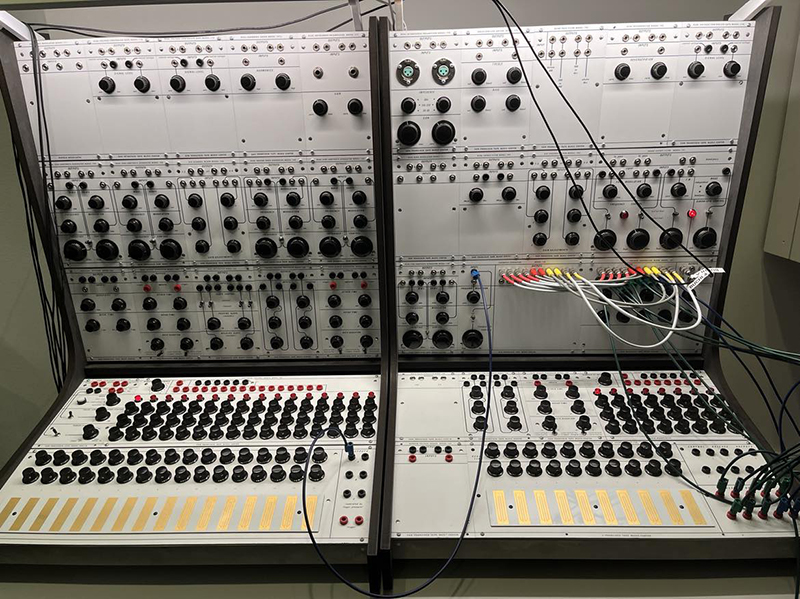
15. James Plotkin – Gaussian Hangover (04:58)
Plotkin is well-known as a highly respected engineer and producer, and spends his week mastering and mixing releases for artists of all professional levels.
He is an American guitarist and producer known for his role in bands such as Khanate and OLD but with an extensive catalogue outside these bands. He has played guitar for Phantomsmasher and Scorn and continues to remix tracks for bands such as KK Null, Nadja, Sunn O))), ISIS, Pelican and Earth. He works in the genres of Grindcore, Industrial, Metal, Noise Music, Drone metal, Dark Ambient, Digital Hardcore and Post-Metal.
When he isn’t playing his guitar he loves to experiment on his Serge and Buchla systems.
I try to avoid prefabricated ideas when patching and let the piece develop on it’s own accord. Most patches start as a simple experiment centered around a single module, and wanting to explore the possibilities of that module. Inevitably, once I start to enjoy what I’m hearing, additional ideas are formed, and the patching continues until I’m satisfied with the results.
I listened to a lot of early experimental music in my young adulthood, and was particularly drawn to Subotnick’s “Silver Apples of the Moon.” Being a young musician meant that I was broke most of the time, and could barely afford the gear I needed to do what I was doing at the time. Once I could finally afford an Easel, I was instantly hooked – it became the gateway drug to a full 30U system.
To my ears, Buchla is a truly unique monster – both vintage/classic and modern in sound, instantly recognizable in most cases as it has it’s own sonic character, and the designs makes patching a lot more fun than with most other systems.
I don’t have a method of working that’s set in stone. Typically, I won’t even start patching with the idea of realizing a full piece – it starts with the desire to try and get “more” from a specific module, and inevitably develops outward. For whatever reason, I try to keep my Buchla patches within the system – I will occasionally introduce non-Buchla modules into a patch for tasks such as psychoacoustic processing, or drum machines for beats, but for the most part (and I’m not exactly sure why this applies to my Buchla system specifically), I like to keep it homogenous when working with Buchla gear.
The Source of Uncertainty will always be my favorite module, with the 250e DAFG as the runner-up. I’m devoted to controllable random generators, and the SoU gives patches life and sometimes unexpected evolution. A stale patch can become an electric organism when the SoU is introduced. At one point I had 3 of them in my system, but admittedly, it was overkill.
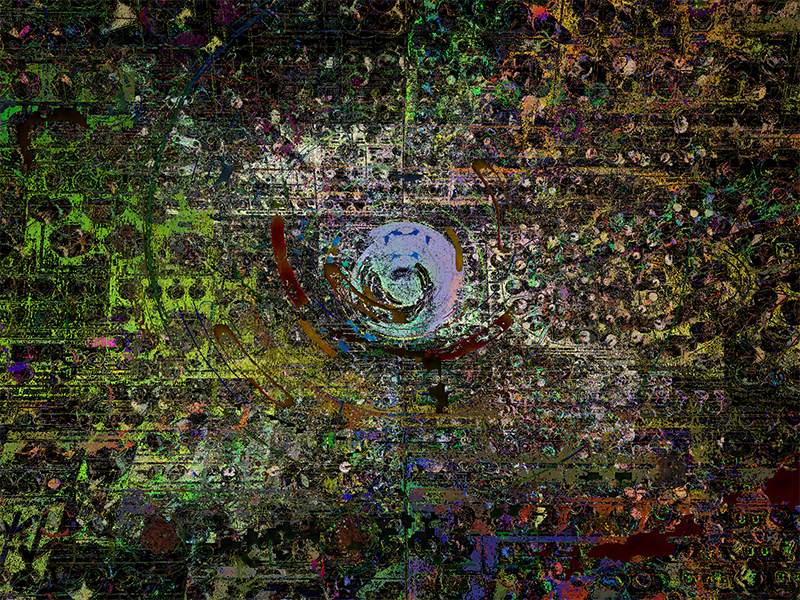
16. Klaatu – Syzygy (08:18)
On a full moon evening, the planets seemed to be aligned on the same side of the sun…
In 1965 I visited San Francisco and luckily managed to catch David tudor performing a composition by Pauline Oliveros. That was a shock, both physical and intellectual for sure. At the same time I was beginning to get closer to twelve-tone and serial music using the principles of atonality, and I wanted to go against tonal harmony, creating sound spaces without reference points by making extensive use of modulation. Back in France, I continued to follow the creations of Morton Subotnick and a few others from afar – as best as I could, since distance was no small thing in those days and it wasn’t easy to find vinyls.
Finally, in the mid 1970s, I managed to buy a Buchla 200 Electric Music Box system, which has been with me ever since.
« Syzygy » was conceived in the 80s one evening when the moon lit up the instrument…
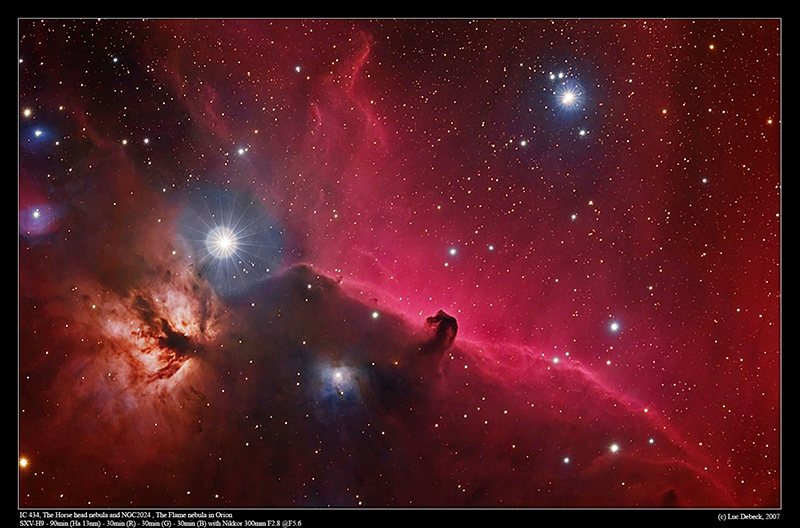
17. Weinglas – Majestic 200 (04:37)
Weinglas is an European sound and noise artist from Germany.
Weinglas’s music takes listeners on a dark journey into the subconscious.
This track should bring the listener into some kind of a dreamy state of mind. But the listener has to decide wether it is a pleasant dream, a nightmare or an always evolving dream between both extremes. Although “Majestic” has been composed and performed solely with a Buchla 200 system it could also be seen as a somehow orchestral piece both soundwise and structurewise.
I always looked for a modular synthesizer that looks, feels and can be used like a real instrument. To me Eurorack e.g. seems to be more like a technical “kit” than a musical instrument. Furthermore the sound of the Buchla is very organic, it combines the possibility to create electronic “noises” that somehow sound strange, lively and organic at the same time.
The Buchla excels at being a structured compositional tool as well as being a great way to use randomness to create soundscapes and inspirations and to improvise. I love a combination of the strange digital oscillator 259e (“twisted waveform generator”) and a 292 or 292e quad lopass gate. The 292 is responsible for the organic sounds of the system while the 259e can sound like anything from a classical oscillator to an electronical mayhem. And the 259e can be “tamed” with the use of Midi or presets that the 200e system offers. Unfortunately the track “Majestic” only features a 292 and no 259e. And there of course is the 272e polyphonic tuner, the most unusual module from all modular synthesizers. It uses four radio tuners as sound sources. Even if you tune one of them to radio noises and the others to radio stations you always get a random mix of voice, music, and noise snippets.
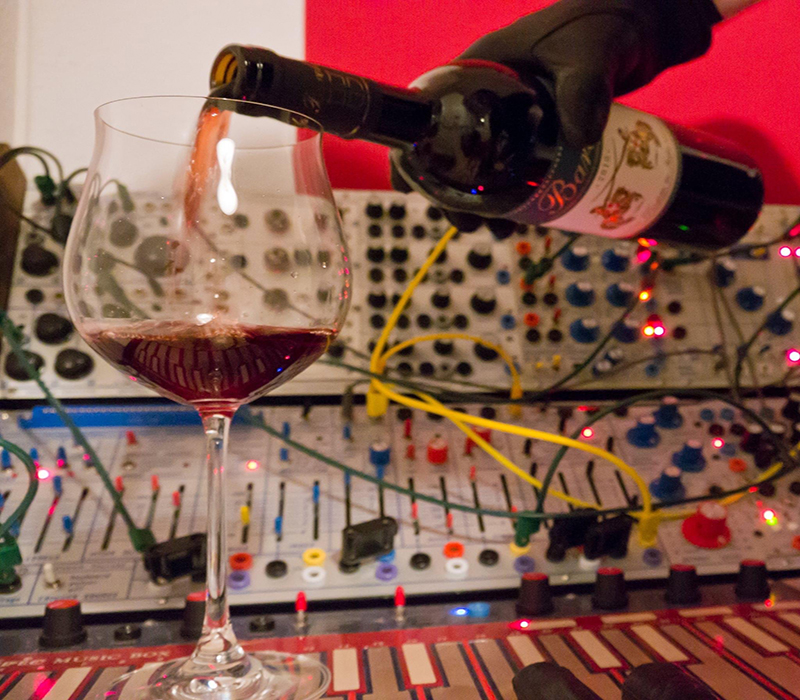
18. Eva|3 – A Longing (08:07)
Eva Kolme has been an active figure in the electronic music scene since 2001 under the alias Eva|3, carving a distinct path within the genre of industrial music.
In 2021, appeared “A World Within,” an album entirely dedicated to the ethereal sounds of the Buchla Music Easel, and exploring the depths of electronic expression.
A Longing’ started as an exercise in developing the ambiguous, combining major and minor colours, the unmusical and musical. Following the same approach as previous compositions on the Music Easel, the song is performed in real-time and is the immediate response between the instrument and myself. It was also a great way to test the latest Northern Light Modular Model Card ME and its distortion algorithm.
When first exposed to the Buchla synth, I was amazed at how organic it sounded compared to other synthesizers. The more I explored Buchla, the more it became apparent that the workflow was equally organic. When I first discovered the music easel, it felt like I was playing an instrument with an interface that felt like an acoustic instrument. The smallest moves can result in dramatic changes in timbre that make the instrument sing uniquely. I was also amazed at how big the Complex Oscillator sounded… The Easel imposes its presence in a mix like nothing else.
For me, there is a before and an after the music easel. It has radically changed my workflow and my music. Before, I would rely very much on a collage of sounds and heavy editing inside a DAW. When I had the easel, it made me want to play and compose as one would on a traditional instrument and this has now permeated through other synthesisers. Still, I always return to the Music Easel when developing musical ideas.
I’m still fairly new to the Buchla world, and one of the reasons I went for Buchla over systems like Eurorack is that I tend to like systems rather than specific modules. The possibilities offered by modules like the MARF are incredible, but systems are more important for me than modules. I don’t long after specific modules, I tend to focus on learning a complete system like a whole instrument, like someone would learn the piano or violin.
I am way digging back into feedback work. In this piece I used a 205 Dual Matrix Mixer + 296 Spectral Processor 1979 Modal Synthesis Voice + 258 Dual Osc. + Lassence/Vedicscapes Multi-mode Feedback Model 13700 filter + 216 Touch Controlled Voltage Source and a Kilpatrick K4816 Pattern Generator.
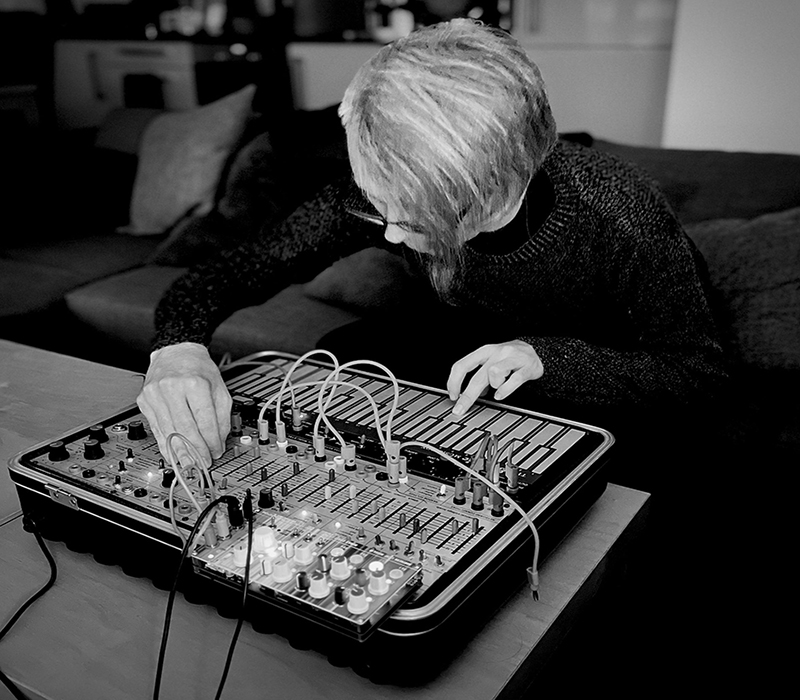
19. Mich L – Cupio Dissolvi (18:52)
Recorded & mixed in summer 2023 by Mich Leemans in Brussels.
Mich L. creates abstract, experimental music with a meditative character that requires careful (deep) listening.
Instruments used: Buchla Music Easel, Electro Harmonic – Frequency Analyzer, Bugbrand – CrossOver Filter, Death By Audio – Rooms
Cupio Dissolvi is inspired by, produced and mixed during the hottest months ever recorded on earth in human history. It’s a very free interpretation of my feelings and emotions during one of the worst summers humanity has ever had in it’s history on earth. It seems like we all know where we’re heading for but no one give a shit and just continues their luxury life with eating meat, consuming, ordering online, travel by plane, use fossil fuels…. But I remain optimistic…. Which, I hope, can also be heard in the track?!
UN’s IPCC (Intergovernmental Panel on Climate Change) states in its latest reports a.o.:
Human-induced climate change, including more frequent and intense extreme events, has caused widespread adverse impacts and related losses and damages to nature and people, beyond natural climate variability. Across sectors and regions the most vulnerable people and systems are observed to be disproportionately affected. The rise in weather and climate extremes has led to some irreversible impacts as natural and human systems are pushed beyond their ability to adapt.
Global warming, reaching 1.5°C in the near-term, would cause unavoidable increases in multiple climate hazards and present multiple risks to ecosystems and humans. The level of risk will depend on concurrent near-term trends in vulnerability, exposure, level of socioeconomic development and adaptation. Near-term actions that limit global warming to close to 1.5°C would substantially reduce projected losses and damages related to climate change in human systems and ecosystems, compared to higher warming levels, but cannot eliminate them all.
First attraction for Buchla came through its history & the artists that (used to) work with it. Once I owned my Easel I was not that impressed by the sound but more by the, in my mind, ease of use and many possibilities to modulate all the different parameters of which a sound is built of.
I only use a small part of the many functions of the easel but it’s just enough for what I need it for. The ease of use and fine tuning that are possible makes it perfect for the very fine details I deal with. The easel is at the moment just the right instrument, easy to take with me, good sounding and limitless in possibilities.
The 208 is definitely my favorite Buchla module.
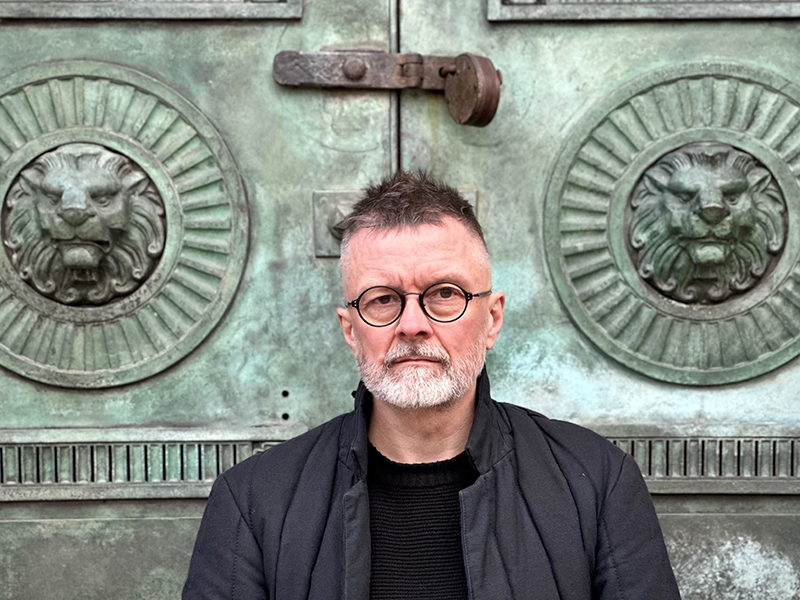
20. Rex Maximus – Aen.id (03:13)
Rex Maximus originated in Melbourne’s Punk/Hardcore/Thrash/electronic bands of the late 80’s where he started using electronics and samplers and currently he loves to play the Buchla Music Easel and the Make Noise Shared Systems.
Aen.id is one of a number of pieces created for a Buchla Music Easel only follow up digital album to “Buchla Plays 1-10”. This was released back in 2021, on my label Sound Crucible. Again I have used the same process of patching then playing around, improvising until I was happy with the result. The new release is currently being mastered and will again be released on Sound Crucible, possibly within the next few months. The working title being “Buchla Plays Again Six”.
Like most people I was turned on to Buchla synthesisers through Morton Subotnick’s “Silver Apples of the Moon”, and that still inspires me to this day. Suzanna Ciani was another early inspiration, and of course Tod Barton!
But I think what really motivated me to actually purchase a Buchla Music Easel was, eight years ago, after listening to Maria Teriaeva and Kaitlyn Aurelia Smith. Both work with the Buchla Music Easel with startling effect. So yeah, the Easel is a favorite of mine, it is small compact, portable, wth retro-futuristic stylings, and packs a punch for its size. I must admit it though, lately I have been trying to overcome my fears and branch out to a Bucla 200. Better book in with M.E.S.S. Melbourne!

BONUS VIDEO:
Ensamble De Incertidumbre – Buchla Jam video (46:47)
Buenos Aires, Argentina, 2022.
Ernesto Romeo: Buchla 200e (261e Complex Waveform Generator, 296e Spectral Processor, 285e Frequency Shifter / Balanced Modulator, 281e Quad Function Generator, 292e Quad Dynamics, 207e Stereo VC Mixer / Mike Preamp, 223e Multidimensional Kinesthetic Tactile Input Port & 222e Multidimensional Kinesthetic Tactile Surface, 225e MIDI Decoder / Preset Manager, 256h CV-MIDI Interface) + Serie 200 (262v Harmonic Oscillator, 258v Dual Saw/Square Oscillators, 291v Dual Voltage Controlled Filters, 266e Source of Uncertainty, 292e Quad Low Pass Gates, 248-1602f v.2 Multiple Arbitrary Function Module -MARF-) + Nothern Light Modular 2OC 1.5 Dual CV Polymorpher, Deformed Digestive Divider, DOBOTZ TSNM 4U Touch Sensitive Memory Pads, 1979 SMP Stereo Microsound Processor, 1979 MSV Voltage Controlled Modal Synthesis Voice modular systems.
Agustin Aguirre: Music Easel + Moog Minifooger Analog Delay (modded), Red Panda Particle Granular Digital Delay
Francisco Rehmann: Serie 200 (207 Custom Mixer, 208r Easel Panel, 258d Dual VCO, 258j Dual VCO, 266r Source Of Uncertainty, 281d Quad Function Generator, 292c Quad LoPass Gate, 296r Spectral Processor) + Electric Dompteur, Stereo Microsound Processor, TSNM 4u & Voltage Circus modular system.
Grabado en estudio/laboratorio La Siesta Del Fauno, Buenos Aires.
Asistencia técnica: Guillermo “Billy Shears” Costa & Rocío Cimmino.
Grabación, edición y dirección de video: Belen Rohde.
